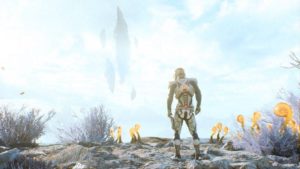

By Craig Taylor | Staff Writer
BioWare’s “Mass Effect Andromeda” is misunderstood. Backlash over the game’s admittedly robotic facial animations created a snowball effect of complaints, and suddenly “Andromeda” became one of the biggest gaming busts of the year. But sitting beneath the dust of social media outrage lies an unexamined wealth of thoughtful design waiting to be explored by players and critics willing to give it a chance.
“Andromeda” takes place in-between the second and third entries in the acclaimed sci-fi-RPG “Mass Effect” series. Players control Ryder, the human “pathfinder” for a coalition of settlers called the Andromeda Initiative. The Initiative comprises of several species from the Milky Way Galaxy that abandoned their homeworlds to make the journey to Andromeda and settle on one of the hospitable “golden worlds” that scientists believed could sustain life. As Ryder, players must lead humanity through the trials of the Andromeda Galaxy as their pathfinder.
But once Ryder awakens from cryo-sleep, the space station which brought humanity to Andromeda is in shambles, many of the settlers are unable to be revived and the golden worlds are far from livable in their current state. It’s Ryder’s job to carve a path for the displaced denizens of the Milky Way and make Andromeda habitable.
There are a number of narrative threads in “Andromeda” that tie together nicely. The connections between the hostile alien race the Initiative encounters, the ancient Remnant technology and Ryder’s mysterious past all connect and give the main quests the context it needs to maintain players’ interests.
The relationship system returns from the previous games, and it’s better than ever. The bonds between the squadmates that join Ryder aboard his ship, the “Tempest,” feel more organic. “Andromeda’s” characters don’t quite fill the big shoes of “Mass Effect” favorites like Garrus and Wrex, but the progression is better-written. They’re no longer just plants you have to water to receive a loyalty mission but, instead, friendships that provide just as many rewards narratively as they do in-game.
The real attraction for “Andromeda,” which doesn’t get nearly enough credit, is its base-building elements. Aside from progressing the main story, Ryder has a number of tasks to complete on each of the hostile “golden worlds” before they become hospitable. After they’re stable, military and research outposts can be created to advance the Initiative’s foothold in the galaxy. As planets get healthier, Ryder can release more groups of people out of stasis, who offer their skills in aiding the Initiative. It’s a non-intrusive micromanagement element that lets players feel the weight of their role as Pathfinder for the human race.
Combat was tampered with significantly for this “Mass Effect,” and the tweaks that were added to create more fluid and dynamic firefights don’t pan out. The core mechanics are the same, as the series’ telltale interplay between weapons, biotics and tech powers still remains. Entering cover no longer requires a button press; walk up to cover and Ryder will simply crouch behind it. There’s an emphasis on movement, as Ryder is expected to utilize his jump-jets to dodge and leap across firefights.
Fighting in “Andromeda” is all about speed, to the dismay of fans of the series’ previous slow-paced, tactical approach to combat. Ryder can only equip three abilities, and swapping them out requires a cumbersome visit to the hotkey submenu again and again. Squadmates can no longer be given commands beyond highlighting where they should move, which means setting up for biotic and tech combos is frustratingly difficult. Success on higher difficulties usually depends on luck and how suicidal your teammates are feeling.
Also important to note are the numerous quality-of-life issues that when combined together add a layer of frustration to an otherwise engrossing experience. The facial animation issues in conversations, while overblown, are noticeable, especially when players spend such a large amount of time communicating with others. Unskippable cutscenes during the Tempest’s touchdown, takeoff and travel between planets will have players picking up their phones after the upteenth viewing, breaking the immersion. These and other minor, patchable issues mean that although they won’t likely exist in “Andromeda” forever, they remain minor annoyances until the game receives an update.
Yet, it’s still wrong to call “Andromeda” a bad game, because it’s not. It’s just some poor creative decisions and small gripes that many have unfairly zeroed-in on. The narrative that this “Mass Effect” is anything less than a solid action-RPG is simply false, as the greatness in “Andromeda” has still yet to be rightfully discovered.





I agree somewhat with this post… Andromeda is NOT a bad game at all. It has a completely different feel than the original trilogy, its focus is somewhere else but it’s a fun play-thru. I disagree about combat, I love actually being able to move around than being glued to convenient cover. That said, this game is far from perfect. It’s supposed to get a patch today to fix animations so we’ll see how that goes. It definitely deserves a chance and an open mind.
Except its a bad game